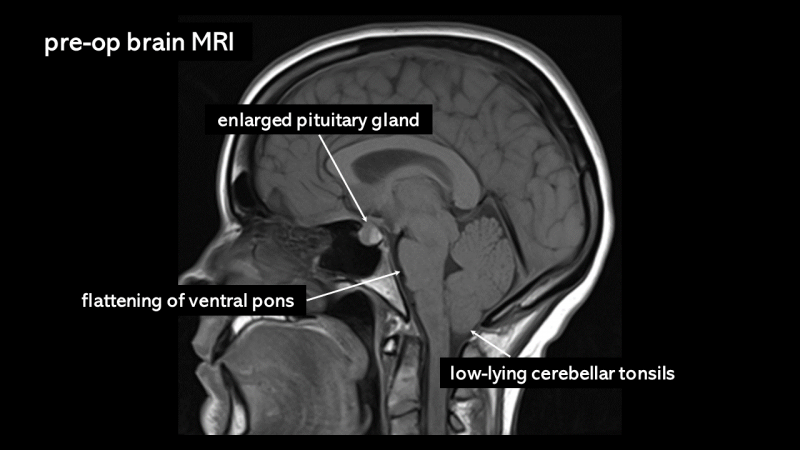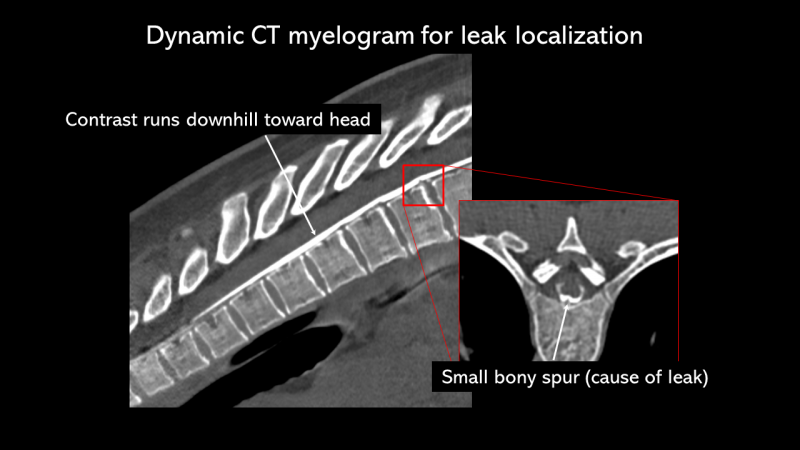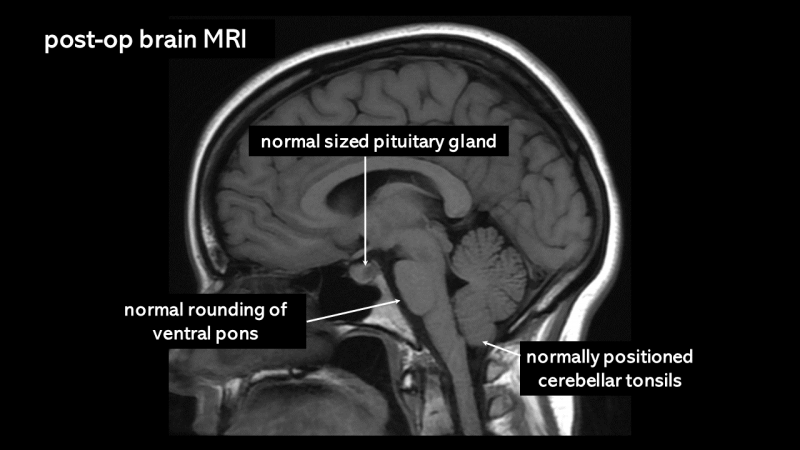Emily’s brain MRI led her doctors to think she had a pituitary tumor. Instead, what she really had was a spinal CSF leak.
Emily was a couple weeks into a one-month trial of Cross-Fit when the headaches started. Driving home after a workout, she found herself experiencing pounding, pulsing pain, to the point where she could barely see. But after getting home and laying down, she felt fine again, and so she chalked it up to overexertion and didn’t investigate further. After her one-month trial was up, she returned to her usual cardio-heavy activities of running and cycling, and life continued as normal.
A few years later, after completing her first marathon, Emily decided to begin weightlifting. Several months in, she noticed she was having trouble getting through her workouts, and her head pounded with such intensity she had to rest before she felt able to drive home. These headaches, like the headaches she’d experienced while doing Cross-Fit, also lessened once she lay down—but unlike before, these headaches never completely went away. Even sitting all day at her job, the headaches would increase in intensity as the day went on. She stopped exercising completely, but the headaches continued, and new symptoms developed, including double vision and memory issues.
Soon the pain was encroaching on her daily life. She was still working from home, but by the late afternoons and evenings, she had to lay flat to minimize the headaches so she could function enough to cook dinner and parent her active young children. It was a challenge. Still, she managed to find creative ways around it: once, when she couldn’t get up to make sure her 5 and 9 year-old children had completed their chores, she used FaceTime to have them confirm that they had indeed cleaned their rooms and had earned the right to have dessert after dinner.
The first doctor Emily sought out to help her with her headaches diagnosed her with migraines. She began a series of migraine medications, but these didn’t help. Emily tried exercising again, but even the low-impact class she took resulted in the worst headache she had ever had. On the drive home, in the grip of nausea, double vision, and excruciating head pain, she pulled over and vomited on the side of the road. Once she made it home, she lay in bed for hours, unable to even take off her sweat-soaked workout clothes. She knew this was more than a migraine.
Her doctor ordered an MRI, which revealed what was believed to be a pituitary tumor, and so Emily was referred to an endocrinologist, as well as a neuro-ophthalmologist and a neurosurgeon. When she described to them her positional headache and double vision, the neurosurgeon immediately suspected she did not have a pituitary tumor at all. What she had was spontaneous intracranial hypotension due to a spinal cerebrospinal fluid, or CSF, leak.

A neuroradiologist reviewed Emily’s brain MRI and noted brain sag and an enlarged pituitary gland – what her other doctor had believed to be a tumor – which confirmed the diagnosis of spinal CSF leak. Ultimately, a dynamic CT myelogram revealed an area in front of her spinal cord where a bone spur had sliced through the dura mater.

Emily had two epidural blood patches, but they provided no relief. Her constant headache was by this point so debilitating that she was no longer able to be upright for any length of time or participate in family life. Eventually, she and her husband talked over their options, and the choice was clear: despite the risks and her own trepidation, Emily needed surgery.

Since the surgery, Emily has been free of the low-pressure headaches that once plagued her. She did experience rebound intracranial hypertension after her surgery, and sought physical therapy to ease the post-surgical pain and discomfort she experienced in her back. But four years later, none of her previous leak symptoms have returned.
Now Emily is back to doing what she loves: running triathlons, working full time, and caring for her kids—and feeling grateful for every pain-free minute.
Our team at Spinal CSF Leak Foundation wishes to extend our appreciation of all those physicians working so hard to help patients, as well as those who assisted with this feature story.

